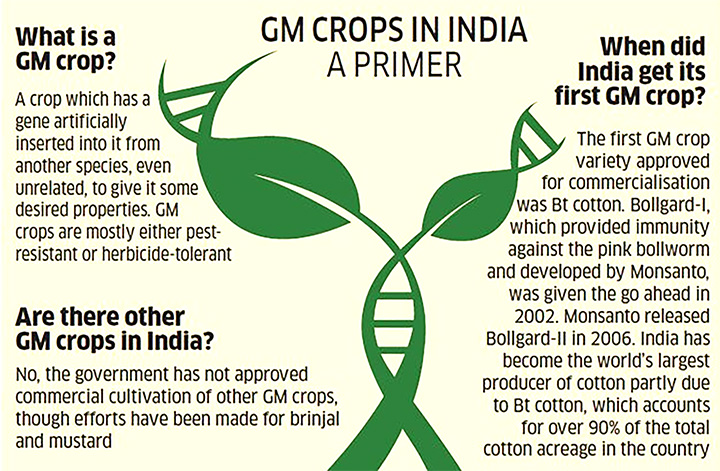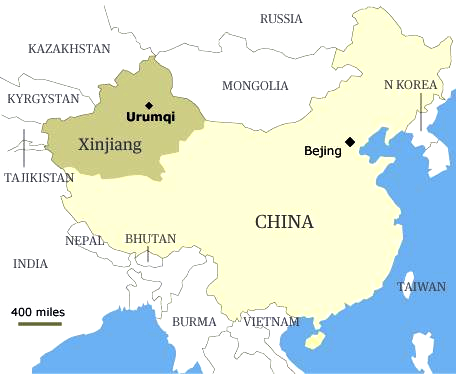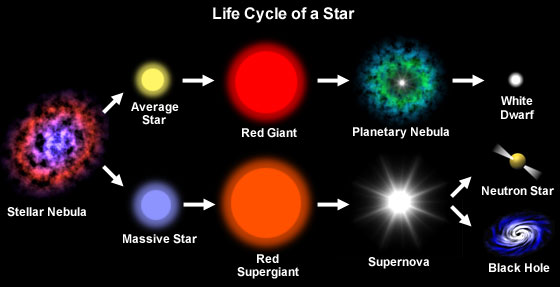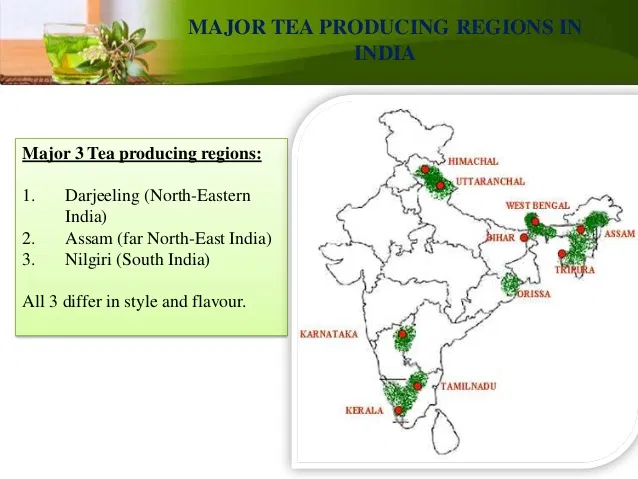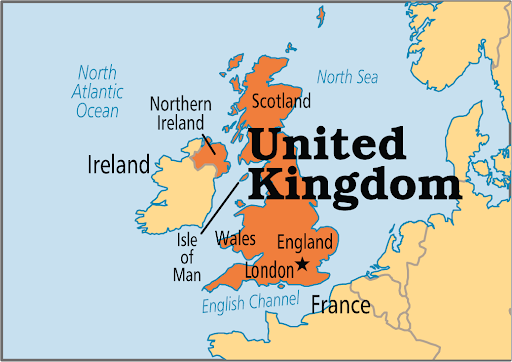Agriculture
Genetically Modified (GM) Crops
Why in News
According to the Coalition for GM Free India, the discovery of 500 tonnes of Genetically Modified (GM) rice in a consignment that India exported to the European Union countries in June 2021 has led to the “loss of reputation of India and its agricultural market’’.
- However, India pointed out that GM rice is not grown commercially in India, let alone exported, and promised a thorough enquiry by its agricultural exports authority, the Agricultural and Processed Food Products Export Development Authority (APEDA).
Key Points
- GM Crops:
- GM foods are derived from plants whose genes are artificially modified, usually by inserting genetic material from another organism, in order to give it a new property, such as increased yield, tolerance to a herbicide, resistance to disease or drought, or to improve its nutritional value.
- Probably the best known variety of GM rice is golden rice.
- Golden rice involves the insertion of genes from a plant -- both daffodils and maize have been used -- and a soil bacterium to create a grain that is enriched with Vitamin A.
- India has approved commercial cultivation of only one GM crop, Bt cotton.
- No GM food crop has ever been approved for commercial cultivation in the country.
- However, confined field trials have been allowed for at least 20 GM crops.
- That includes varieties of GM rice which would have improved resistance to insects and diseases, as well as hybrid seed production and nutritional enhancements such as golden rice.
- The cons of GM foods are that they may cause allergic reactions because of their altered DNA and they may increase antibiotic resistance.
- Export of GM Rice (Implications for India):
- India is the world’s top rice exporter, earning Rs. 65,000 crore in 2020 by selling 18 million tonnes of grain (organic rice), about a quarter of which is premium basmati.
- Among the 75 countries which buy Indian rice, West Asian nations, the US and the U.K. are the biggest importers of basmati, while the majority of non-basmati goes to African countries and neighbours Nepal and Bangladesh.
- For Indian farmers, the nightmare scenario could be what happened in the US in 2006, when trace amounts of a GM rice variety were found in shipments ready for exports.
- Trading partners such as Japan, Russia and the EU suspended rice imports from the US, hitting farmers hard.
- Under pressure from the rice export lobby at the time, India drafted policies to ban GM rice trials in the basmati belt. However, farmers from other parts of the country, especially those aiming for the nascent but growing organic rice export market, worry that their products could face contamination.
- Unauthorised HtBt Cotton and Bt Brinjal are already being grown commercially, with hundreds of growers blatantly defying the governmental ban.
Way Forward
- India’s top rice scientists seem to have moved away from conventional GM rice research for the time being.
- Recently, first varieties of non-GM herbicide tolerant rice were launched which can also be directly seeded, thus saving on water and labour costs (Pusa Basmati 1979 and Pusa Basmati 1985).
- The IARI (Indian Agricultural Research Institute) is also working to create drought-tolerant, salinity-tolerant rice strains through new gene editing technology (Site Directed Nuclease (SDN) 1 and 2) - which is yet to gain regulatory approval -- which allows for tweaking the rice plant’s own genes without introducing the genes of any other organism.
- In the face of such new advances, the regulatory regime needs to be strengthened, for the sake of domestic as well as export consumers.
- Technology approvals must be streamlined and science-based decisions implemented.
- Rigorous monitoring is needed to ensure that safety protocols are followed strictly, and enforcement must be taken seriously to prevent the spread of illegal GM crops.
International Relations
Declaration for Uighur Muslims
Why in News
Recently, 43 countries have signed a declaration, calling on China to ensure full respect for the rule of law for the Muslim Uighur community in Xinjiang.
- Earlier, in March 2021 several hundred Uighur Muslim women in Turkey staged an International Women’s Day march against the extradition agreement of Turkey with China.
Key Points
- About the Declaration:
- The declaration was signed by the US and other countries accusing China of human rights violations and ethnic cleansing against the Uighur Muslims.
- Similar declarations in 2019 and 2020 condemned China for its policies in Xinjiang, where United States has accused Beijing of carrying out genocide.
- It also called for access to Xinjiang for independent observers, including the UN High Commissioner for Human Rights.
- It noted the existence of a large network of ‘political re-education’ camps in Xinjiang Uighur Autonomous Region, where over a million people have been arbitrarily detained.
- The declaration was signed by the US and other countries accusing China of human rights violations and ethnic cleansing against the Uighur Muslims.
- China’s Stand:
- China has long denied accusations of ethnic cleansing. It also denounced the declaration and termed it as a plot to hurt China's image.
- China claims its camps to be ‘educational centres’ where the Uighurs are being cured of “extremist thoughts” and radicalisation, and learning vocational skills.
- However, in actuality, they are brutal incarceration camps.
- India’s Stand:
- The Indian government has maintained near silence on the Uighur crisis.
Uighur Muslims
- About:
- The Uighurs are a predominantly Muslim minority Turkic ethnic group, whose origins can be traced to Central and East Asia.
- The Uighurs speak their own language, similar to Turkish, and see themselves as culturally and ethnically close to Central Asian nations.
- The Uighurs are considered to be one of the 55 officially recognized ethnic minority communities in China.
- However, China recognises the community only as a regional minority and rejects that they are an indigenous group.
- Currently, the largest population of the Uighur ethnic community lives in the Xinjiang region of China.
- A significant population of Uighurs also lives in the neighbouring Central Asian countries such as Uzbekistan, Kyrgyzstan and Kazakhstan.
- Xinjiang is technically an autonomous region within China — its largest region, rich in minerals, and sharing borders with eight countries, including India, Pakistan, Russia and Afghanistan.
- The Uighurs are a predominantly Muslim minority Turkic ethnic group, whose origins can be traced to Central and East Asia.
- Persecution of Uighurs:
- Over the past few decades, as economic prosperity has come to Xinjiang, it has brought with it in large numbers the majority Han Chinese.
- They have cornered the better jobs, and left the Uighurs feeling their livelihoods and identity were under threat.
- This led to sporadic violence, in 2009 culminating in a riot that killed 200 people, mostly Han Chinese, in the region’s capital Urumqi.
- Uighur Muslims for decades have suffered from abuses including persecution, forced detention, intense scrutiny, surveillance and even slavery.
- China claims that Uighur groups want to establish an independent state and, because of the Uighurs’ cultural ties to their neighbours, leaders fear that elements in places like Pakistan may back a separatist movement in Xinjiang.
- Over the past few decades, as economic prosperity has come to Xinjiang, it has brought with it in large numbers the majority Han Chinese.
Way Forward
- China must close its “Vocational Training Centers,” release the religious and political prisoners from prisons and detention camps.
- It should adopt multiculturalism and accept the Uighurs and other Turkic Muslims of China as ordinary citizens equal to native Chinese.
- All the countries should reconsider their position and urge China to immediately stop the persecution of Muslims and the prohibition of Islam in Xinjiang.
International Relations
China Passes New Border Law
Why in News
Recently, China’s legislature has adopted a new border law that calls on the state and military to safeguard territory and “combat any acts” that undermine China’s territorial claims.
- The new land border law was adopted amid the continued standoff between Indian and Chinese militaries in eastern Ladakh.
Key Points
- About the Law:
- Sovereignty and Territorial Integrity: It stipulates that the sovereignty and territorial integrity of the People’s Republic of China are sacred and inviolable.
- The state shall take measures to safeguard territorial integrity and land boundaries and guard against and combat any act that undermines territorial sovereignty and land boundaries.
- Responsibilities: It designates the various responsibilities of the military, the State Council or Cabinet, and provincial governments in managing the security and economic issues in border areas.
- The People's Liberation Army (PLA) “shall carry out border duties” including “organising drills” and “resolutely prevent, stop and combat invasion, encroachment, provocation and other acts”.
- The state shall take measures to strengthen border defence, support economic and social development as well as opening-up in border areas, improve public services and infrastructure in such areas, encourage and support people's life and work there.
- The state shall, following the principle of equality, mutual trust and friendly consultation, handle land border-related affairs with neighbouring countries through negotiations to properly resolve disputes and longstanding border issues.
- Sovereignty and Territorial Integrity: It stipulates that the sovereignty and territorial integrity of the People’s Republic of China are sacred and inviolable.
- Concerns:
- It would formalise some of China’s recent actions in disputed territories with both India and Bhutan. The passing of the law coincides with stepped up Chinese activity along the land borders, which have mirrored actions in disputed waters in the East and South China Sea.
- It includes the PLA’s massing of troops in forward areas along the India border and multiple transgressions across the Line of Actual Control (LAC).
- China in recent years has been strengthening border infrastructure, including the establishment of air, rail and road networks. It also launched a bullet train in Tibet which extends up to Nyingchi, the border town close to Arunachal Pradesh.
- The construction of new “frontier villages” along the border with Bhutan.
- China's Border Disputes:
- China has a 22,100-kilometer land border with 14 countries.
- It has resolved the boundary disputes with 12 neighbours.
- India and Bhutan are the two countries with which China is yet to finalise the border agreements.
- China and Bhutan signed an MOU firming up a three-step roadmap for expediting the boundary negotiations.
- India-China border disputes cover 3,488-km along the Line of Actual Control, China-Bhutan dispute covers about 400 km.
- China has a 22,100-kilometer land border with 14 countries.
Biodiversity & Environment
Fourth Assembly of ISA
Why in News
Recently, the fourth general assembly of the International Solar Alliance (ISA) was held.
- A total of 108 countries participated in the assembly, including 74 member countries, 34 observer and prospective countries, 23 partner organisations and 33 special invitee organisations.
Key Points
- About the International Solar Alliance (ISA):
- The ISA is an intergovernmental treaty-based organisation with a global mandate to catalyse solar growth by helping to reduce the cost of financing and technology.
- ISA, co-founded by India and France during the 2015 climate change conference in Paris has assumed centre-stage for India’ attempts at a global climate leadership role.
- ISA is the nodal agency for implementing One Sun One World One Grid (OSOWOG), which seeks to transfer solar power generated in one region to feed the electricity demands of others.
- India has allotted 5 acres of land to the ISA in National Institute of Solar Energy (NISE) campus, Gurugram and has released a sum of Rs. 160 crore for creating a corpus fund, building infrastructure and meeting day to day recurring expenditure of the ISA up to the year 2021-22.
- NISE is an autonomous institution of the Ministry of New and Renewable (MNRE) and is the apex National R&D institution in the field of Solar Energy.
- Highlights of the Assembly:
- Solar Investments:
- A promise to achieve USD 1 trillion global investments in solar energy by 2030.
- A Solar Investment Action Agenda and a Solar Investment Roadmap will be launched at COP26 (United Nations (UN) Climate Change Conference).
- On One Sun One World One Grid (OSOWOG):
- Gave a green light to the “One Sun” political declaration for the launch of Green Grids Initiative-One Sun One World One Grid (GGI-OSOWOG) at COP26.
- OSOWOG: The concept of a single global grid for solar was first outlined at the First Assembly of the ISA in late 2018.
- COP 26 Green Grid Initiative: The aim of this initiative is to help achieve the pace and scale of reforms to infrastructure and market structures needed to underpin the global energy transition.
- Gave a green light to the “One Sun” political declaration for the launch of Green Grids Initiative-One Sun One World One Grid (GGI-OSOWOG) at COP26.
- New ISA Programmes:
- New ISA programmes launched on management of solar PV panels & battery usage waste and solar hydrogen programme.
- The new Hydrogen initiative is aimed at enabling the use of solar electricity to produce hydrogen at a more affordable rate than what is available currently (USD 5 per KG), by bringing it down to USD 2 per KG.
- New ISA programmes launched on management of solar PV panels & battery usage waste and solar hydrogen programme.
- Solar Investments:
- Some Solar Energy Initiatives of India:
- National Solar Mission (a part of National Action Plan on Climate Change): To establish India as a global leader in solar energy, by creating the policy conditions for its diffusion across the country as quickly as possible.
- INDC’s target: It targets installing 100 GW grid-connected solar power plants by the year 2022.
- This is in line with India’s Intended Nationally Determined Contributions (INDCs) target to achieve about 40% cumulative electric power installed capacity from non-fossil fuel based energy resources and to reduce the emission intensity of its GDP by 33 to 35% from 2005 level by 2030.
- International Solar Alliance (ISA) and One Sun One World One Grid (OSOWOG):
- Government Schemes: Such as Solar Park Scheme, Canal bank & Canal top Scheme, Bundling Scheme, Grid Connected Solar Rooftop Scheme etc.
- First Green Hydrogen Mobility project: National Thermal Power Corporation Limited (NTPC) Renewable Energy Ltd (REL) signed a Memorandum of Understanding with the Union Territory of Ladakh to set up the country’s first Green Hydrogen Mobility project. Green hydrogen is produced by electrolysis of water using renewable energy (like Solar, Wind) and has a lower carbon footprint.
Science & Technology
White Dwarf
Why in News
Recently, an international team saw a white dwarf losing its brightness in 30 minutes, which usually takes a period of several days to months.
- This peculiarity in brightness of white dwarfs can be referred to as switch on and off phenomena.
- Using the Hubble Space telescope and Transiting Exoplanet Survey Satellite (TESS), astronomers have identified several white dwarfs over the years.
Key Points
- About White Dwarfs:
- Formation:
- White dwarfs are stars that have burned up all of the hydrogen they once used as nuclear fuel.
- Such stars have very high density.
- A typical white dwarf is half the size of our Sun and has a surface gravity 1,00,000 times that of Earth.
- Stars like our sun fuse hydrogen in their cores into helium through nuclear fusion reactions.
- Fusion in a star's core produces heat and outward pressure (they bloat up as enormous red giants), but this pressure is kept in balance by the inward push of gravity generated by a star's mass.
- When the hydrogen, used as fuel, vanishes and fusion slows, gravity causes the star to collapse in on itself into white dwarfs.
- White dwarfs are stars that have burned up all of the hydrogen they once used as nuclear fuel.
- Black Dwarfs:
- Eventually - over tens or even hundreds of billions of years - a white dwarf cools until it becomes a black dwarf, which emits no energy. Because the universe's oldest stars are only 10 billion to 20 billion years old there are no known black dwarfs.
- It must be noted that not all white dwarfs cool and transform into black dwarfs.
- Chandrasekhar Limit:
- Those white dwarfs which have enough mass reach a level called the Chandrasekhar Limit.
- At this point the pressure at its center becomes so great that the star will detonate in a thermonuclear supernova (explosion).
- Formation:
- Switch on and off Phenomena:
- The white dwarf, which is discussed, is part of a binary system called TW Pictoris, where a star and a white dwarf orbit each other.
- The two objects are so close to each other that the star transfers material to the white dwarf.
- As this material approaches the white dwarf it forms an accretion disk or a disk of gas, plasma, and other particles around it.
- As the accretion disk material slowly sinks closer towards the white dwarf it generally becomes brighter.
- Also there are cases when the donor stars stop feeding the white dwarf disk. However, reasons for this are still not clear.
- When this happens the disk is still bright as it “drains” material that was previously still there.
- It then takes the disk about 1-2 months to drain most of the material.
- However, TW Pictoris' drop in brightness in 30 mins was totally unexpected and it may be due to the process called magnetic gating.
- Magnetic gating happens when the magnetic field is spinning so rapidly around the white Dwarf it creates a barrier disrupting the amount of matter the white dwarf can receive.
- The white dwarf, which is discussed, is part of a binary system called TW Pictoris, where a star and a white dwarf orbit each other.
- Significance: This discovery will help understand the physics behind accretion – how black holes and neutron stars feed material from their nearby stars.
Chandrasekhar Limit
- Chandrasekhar Limit is the maximum mass theoretically possible for a stable white dwarf star.
- A limit which mandates that no white dwarf (a collapsed, degenerate star) can be more massive than about 1.4 times the mass of the Sun.
- Any degenerate object more massive must inevitably collapse into a neutron star or black hole.
- The limit is named after the Nobel laureate Subrahmanyan Chandrasekhar, who first proposed the idea in 1931.
- He was awarded the Nobel Prize in Physics in 1983 for his work on the physical processes involved in the structure and evolution of stars.
Indian Economy
Tea Exports Decline
Why in News
Recently, the exports of tea from India registered a decline of around 14.4% in the first seven months (January-July) of 2021 as compared to the same period in 2020.
Key Points
- About:
- Total exports during January to July of 2021 was 100.78 million kilograms as against 117.56 million kilograms in the same period of 2020.
- The CIS (Commonwealth of Independent States) block remained the largest importer of tea at 24.14 million kilograms, down from 30.53 million kilograms in the previous similar period.
- The only exceptions are USA and UAE where exports registered an increase this period of 2021.
- Reasons of Decline:
- US Sanctions on Iran:
- Exports to Iran, which was once a big buyer of Indian tea, was lower due to the sanctions by the U.S.
- Non-Availability of Containers:
- The other prime reason is non-availability of shipping containers which have become very expensive during the Covid times.
- Availability of Low-Cost Varieties:
- Due to the availability of low-cost varieties in the global market and amid trade restrictions in countries that have traditionally been strong importers.
- Low Prices of Other Tea:
- Indian exports have suffered in the last two-three years due to very low prices of Kenyan and Sri Lankan tea.
- Kenyan tea auction price average is much less than the Indian auction average.
- Domestic Consumption:
- About 80% of it produced in India is sold for domestic consumption, as per a 2018 'Executive Summary of Study on Domestic Consumption of Tea' published by the Tea Board.
- Stopping Exports to Pakistan:
- Exports to Pakistan, a major market for Indian tea, have also stopped since the last three years following escalation of tension between the two countries.
- Pandemic-Induced Economy:
- The coronavirus-induced economy has resulted in several commodities’ low production and imbalance mechanisms of the Indian economy. This has impacted exports of India’s tea along with other significant reasons.
- US Sanctions on Iran:
- About:
- Tea is a beverage made from the Camellia sinensis plant. It is the world’s most consumed drink, after water.
- Origin:
- It is believed that tea originated in northeast India, north Myanmar and southwest China, but the exact place where the plant first grew is not known. There is evidence that tea was consumed in China 5,000 years ago.
- Conditions of Growth:
- Climate: Tea is a tropical and sub-tropical plant and grows well in hot and humid climates.
- Temperature: The ideal temperature for its growth is 20°-30°C and temperatures above 35°C and below 10°C are harmful for the bush.
- Rainfall: It requires 150-300 cm annual rainfall which should be well distributed throughout the year.
- Soil: The most suitable soil for tea cultivation is slightly acidic soil (without calcium) with porous sub-soil which permits a free percolation of water.
- India and Tea Production
- The largest consumer of tea in the world.
- The second largest producer of tea in the world.
- China is the largest producer.
- The fourth largest exporter of tea in the world.
- International Tea Day:
- It is observed on 21st May every year after it was designated by the United Nations General Assembly in December 2019.
Important Facts For Prelims
Konkan Shakti 2021
Why in News
Recently, India and the UK started Konkan Shakti 2021, the first-ever tri-services joint exercise. It started off the west coast of India.
- Earlier, the Gorkha Rifles (Frontier Force) of the Indian Army was awarded a Gold medal in the Cambrian Patrol Exercise, which was held in Wales (the UK).
Key Points
- Aim:
- To derive mutual benefits from each other’s experiences and also showcase the continuing cooperation between the two countries.
- It is also aimed at training troops in the conduct of Humanitarian Aid and Disaster Relief Operations by coalition forces in an opposed environment.
- Other Joint Exercises between India and UK:

